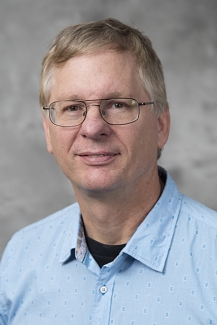Former JILA Fellow Chris Greene received one of the highest honors for a scientist in the United States. Greene, professor of physics and astronomy at Purdue University, was named to the National Academy of Sciences this week. He is one of 100 new members invited to join the academy on April 30.
Greene's work includes studying ultra cold few-body and many-body quantum systems, ultrafast laser interactions with atoms and molecules, novel and multichannel Rydberg molecules, electron-molecule collisions and dissociative recombination.
The National Academy of Sciences was created in 1863 by an act of Congress to advise the nation on scientific and research matters. The National Academy of Sciences is a private, nonprofit society of distinguished scholars engaged in scientific and engineering research, dedicated to furthering science and technology and their use for the general welfare. There are currently 2,347 active members and 487 foreign associates.



 The Physics Frontiers Centers (PFC) program supports university-based centers and institutes where the collective efforts of a larger group of individuals can enable transformational advances in the most promising research areas. The program is designed to foster major breakthroughs at the intellectual frontiers of physics by providing needed resources such as combinations of talents, skills, disciplines, and/or specialized infrastructure, not usually available to individual investigators or small groups, in an environment in which the collective efforts of the larger group can be shown to be seminal to promoting significant progress in the science and the education of students. PFCs also include creative, substantive activities aimed at enhancing education, broadening participation of traditionally underrepresented groups, and outreach to the scientific community and general public.
The Physics Frontiers Centers (PFC) program supports university-based centers and institutes where the collective efforts of a larger group of individuals can enable transformational advances in the most promising research areas. The program is designed to foster major breakthroughs at the intellectual frontiers of physics by providing needed resources such as combinations of talents, skills, disciplines, and/or specialized infrastructure, not usually available to individual investigators or small groups, in an environment in which the collective efforts of the larger group can be shown to be seminal to promoting significant progress in the science and the education of students. PFCs also include creative, substantive activities aimed at enhancing education, broadening participation of traditionally underrepresented groups, and outreach to the scientific community and general public.